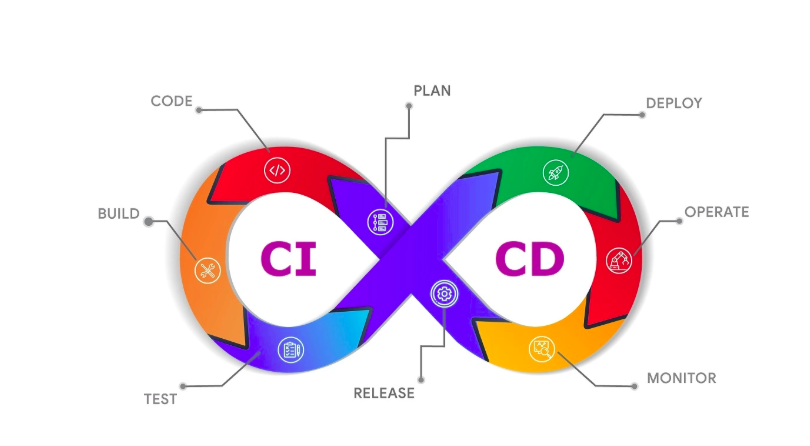
How a BDE Connects Business Vision With Technology
How a BDE Connects Business Vision With Technology Kumkum Kumari 21/11/2025At Speqto, we work with organizations that are constantly evolving entering new markets, scaling operations, or […]


At Speqto, ensuring software quality is a top priority. That’s why our QA team relies on the best bug tracking tools to catch and fix issues quickly, making sure every release is reliable and efficient.
In modern software delivery, speed and security go hand in hand. A secure CI/CD (Continuous Integration/Continuous Deployment) pipeline ensures that every change you ship is tested, verified, and deployed automatically without compromising your cloud infrastructure or leaking sensitive data. For DevOps engineers, building secure pipelines on AWS with Jenkins and Docker is a proven way to automate releases while keeping credentials, environments, and workloads safe.
Continuous Integration (CI) is a practice in which code updates are continuously integrated into a shared repository. Automated builds and testing validate these integrations for each commit so that any potential problems are identified and resolved as soon as they happen.
Continuous Deployment (CD) goes one step beyond automation by putting all code changes that succeed the automated test stage directly into production. This closed feedback loop reduces lag time and provides users with the most recent updates as soon as they become available.The Importance of CI/CD in Contemporary Development
Installing CI/CD pipelines reaps the following fundamental advantages:
Speedier Time-to-Market: Automation eliminates manual processes, allowing fast feature and bug fix delivery.
Improved Code Quality: Early error catching through continuous testing greatly minimizes the chances of bugs in production.
Seamless Collaboration: Developers collaborate within a uniform environment, minimizing inconsistencies between development and production.
Cost Efficiency: Reducing manual intervention allows organizations to minimize operational expenditures and decrease error-caused downtimes.
These advantages, applied to blockchain, crypto, and web development, help overcome inherent security and deployment challenges, protect secrets and credentials, and enable quicker, more stable releases.
For projects that are complex or scale over a longer time period, Bugzilla is the tool we count on. It provides in-depth reporting of bugs and automates notifications, so every team member stays updated without delay. We can track the history of each bug’s journey from discovery to fix, which gives us accountability and confidence that no issue is overlooked. Bugzilla also offers powerful search and categorization capabilities, making it easier for our team to manage even large volumes of defects. This level of precision and transparency means our clients always know that their projects are receiving the thorough attention they deserve.
Core Components of a Secure CI/CD Pipeline.
Below is a simple, practical structure for building a secure pipeline on AWS:
A secure CI/CD pipeline on AWS, powered by Jenkins, Docker, and robust secrets management, gives your team the confidence to deploy updates frequently without sacrificing security or compliance. By embedding security controls directly into the development process and automating repetitive tasks, organizations reduce risk while accelerating innovation.
At Speqto, we help teams design, implement, and manage secure DevOps pipelines that scale with your business so you can focus on delivering great software, faster and safer.

How a BDE Connects Business Vision With Technology
How a BDE Connects Business Vision With Technology Kumkum Kumari 21/11/2025At Speqto, we work with organizations that are constantly evolving entering new markets, scaling operations, or […]

Apache JMeter Demystified: Your 7-Stage Blueprint for a Seamless First Performance Test
Apache JMeter Demystified: Your 7-Stage Blueprint for a Seamless First Performance Test Megha Srivastava 21 November 2025 In the intricate world of software development and deployment, ensuring a robust user experience is paramount. A slow application can quickly deter users, impacting reputation and revenue. This is where Apache JMeter emerges as an indispensable tool, offering […]

STRIDE Simplified: A Hands-On Blueprint for Pinpointing Software Threats Effectively
STRIDE Simplified: A Hands-On Blueprint for Pinpointing Software Threats Effectively Megha Srivastava 21 November 2025 In the intricate landscape of modern software development, proactive security measures are paramount. While reactive incident response is crucial, preventing vulnerabilities before they become exploits is the hallmark of robust software engineering. This is where threat modeling, and specifically the […]

From Static to Streaming: A Practical Developer’s Guide to Real-time Applications Using GraphQL Subscriptions
From Static to Streaming: A Practical Developer’s Guide to Real-time Applications Using GraphQL Subscriptions Shakir Khan 21 November 2025 The Paradigm Shift: From Static to Streaming Experiences In an era where user expectations demand instant gratification, the web has rapidly evolved beyond its static origins. Today, a modern application’s success is often measured by its […]

The TanStack Query Edge: Deep Dive into Advanced Caching for Optimal Application Speed
The TanStack Query Edge: Deep Dive into Advanced Caching for Optimal Application Speed Shubham Anand 21 November 2025 In the relentless pursuit of seamless user experiences and lightning-fast web applications, data management stands as a formidable challenge. Modern front-end frameworks demand intelligent solutions to handle asynchronous data, and this is precisely where TanStack Query (formerly […]